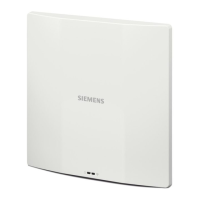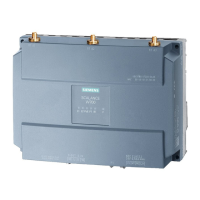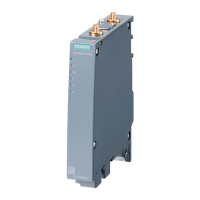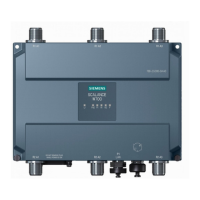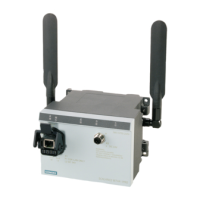SNMPv3 supports:
● Fully encrypted user authentication
● Encryption of the entire data traffic
● Access control of the MIB objects at the user/group level
With the introduction of SNMPv3, you can no longer transfer user configurations to other
devices without taking special action, e.g. by loading a configuration file.
According to the standard, the SNMPv3 protocol uses a unique SNMP engine ID as an internal
identifier for an SNMP agent. This ID must be unique in the network. It is used to authenticate
access data of SNMPv3 users and to encrypt it.
Depending on whether you have enabled or disabled the “SNMPv3 User Migration” function,
the SNMP engine ID is generated differently.
Restriction when using the function
Use the "SNMPv3 User Migration" function only to transfer configured SNMPv3 users to a
substitute device when replacing a device.
Do not use the function to transfer configured SNMPv3 users to multiple devices. If you load a
configuration with created SNMPv3 users on several devices, these devices use the same
SNMP engine ID. If you use these devices in the same network, your configuration contradicts
the SNMP standard.
Compatibility with predecessor products
You can only transfer SNMPv3 users to a different device if you have created the users as
migratable users. To create a migratable user the "SNMPv3 User Migration" function must be
activated when you create the user.
4.7 Spanning Tree
Avoiding loops
The Spanning Tree algorithm detects redundant physical network structures and prevents the
formation of loops by disabling redundant paths. It evaluates the distance and performance of
a connection or bases the decisions on settings made by the user. Data is then exchanged only
over the remaining connection paths.
If the preferred data path fails, the Spanning Tree algorithm then searches for the most efficient
path possible with the remaining nodes.
Root bridge and bridge priority
The identification of the most efficient connection is always related to the root bridge, a network
component that can be considered as a root element of a tree-like network structure. With the
"Bridge Priority" parameter, you can influence the selection of the root bridge. The computer
with the lowest value set for this parameter automatically becomes the root bridge. If two
computers have the same priority value, the computer with the lower MAC address becomes
the root bridge.
Technical basics
4.7 Spanning Tree
SCALANCE W1780/W1740 according to IEEE 802.11ac Web Based Management
40 Configuration Manual, 11/2019, C79000-G8976-C485-03
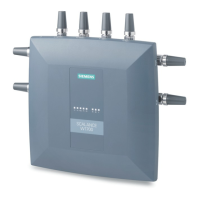
